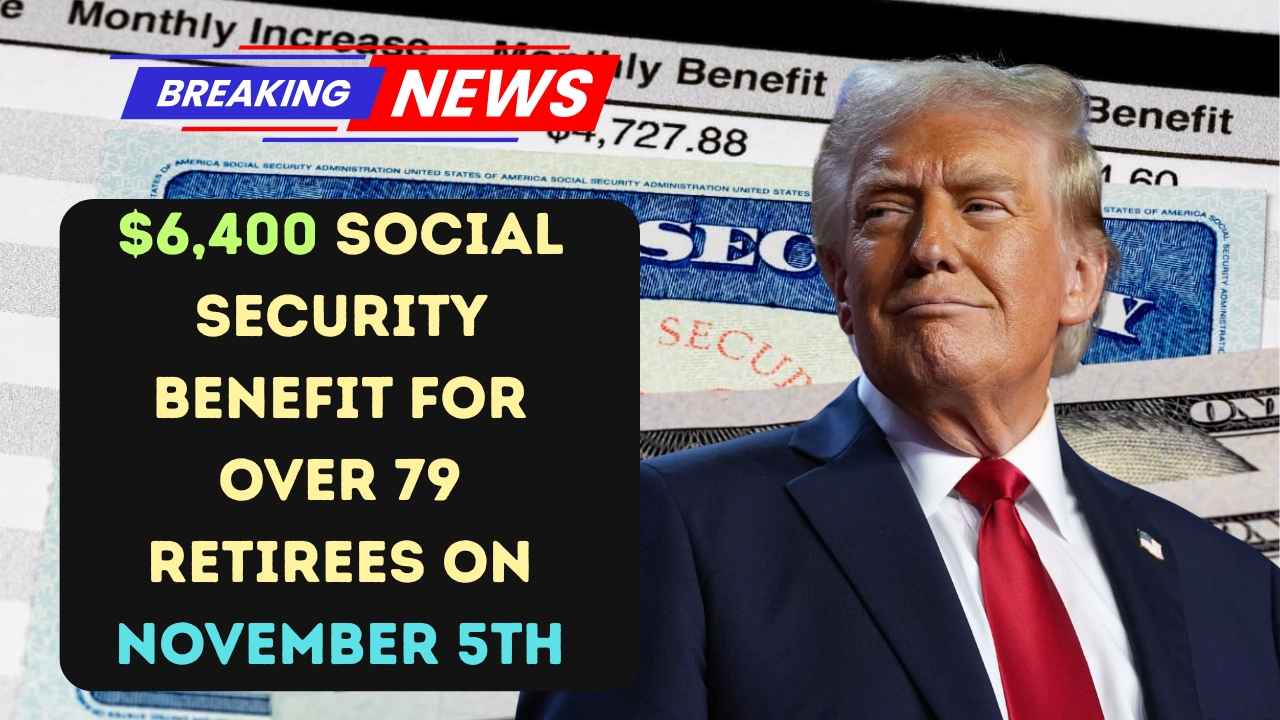If you’re a retiree over the age of 79—or you have parents or grandparents who are—it’s time to pay attention. A new buzz is circulating around a $6,400 Social Security benefit set to roll out to eligible seniors starting November 5th. And honestly, it’s catching everyone’s eye. Why? Because for many retirees living on a fixed income, this kind of boost isn’t just helpful—it’s life-changing.
Now, before jumping to conclusions or expecting a check in the mailbox tomorrow, let’s break it all down. What is this benefit, who’s eligible, and how can seniors actually claim it? Let’s unpack the details together, in plain language.
The Big Picture: What’s the $6,400 Benefit All About?
The so-called $6,400 Social Security benefit is part of a wider financial relief initiative aimed at seniors. It’s not a random bonus or a gimmick—it’s an adjustment and supplemental payout connected to healthcare assistance and inflation relief efforts under existing Social Security and Medicare frameworks.
Essentially, the payment is designed to help retirees over 65, especially those aged 79 and older, cover rising medical costs, prescription expenses, and basic living needs. While it’s not a “new” Social Security program per se, it ties into benefits retirees are already entitled to—just with additional federal and state-level support.
And here’s the best part: eligible seniors could see payments starting as early as November 5th, 2025.
Who Qualifies for the $6,400 Benefit?
This is the big question everyone’s asking—and rightfully so. Eligibility can vary slightly depending on state programs and income thresholds, but generally speaking, here’s what’s being looked at:
| Eligibility Criteria | Details |
|---|---|
| Age Requirement | Must be 65 or older (priority to those 79+) |
| Social Security Status | Currently receiving retirement or disability benefits |
| Income Limit | Lower to moderate income households (varies by state) |
| Residency | Must be a U.S. citizen or lawful resident |
| Medicare Enrollment | Enrollment in Medicare Part A and/or B may boost eligibility |
If a senior meets these conditions, they could qualify for up to $6,400 in benefits, which may come as a one-time payment or through monthly disbursements depending on their specific program.
How to Claim or Verify Eligibility
Let’s be honest—navigating Social Security paperwork can feel like solving a puzzle. But thankfully, this one’s fairly straightforward.
- Check Eligibility Online – Head to the official Social Security Administration (SSA) website or your state’s benefits portal. There’s usually an eligibility checker or benefit estimator tool.
- Contact SSA Directly – Seniors can call 1-800-772-1213 to get clarification about additional support programs or supplemental payments.
- Consult Local Agencies – State or county aging departments often assist seniors with applications for additional Social Security or Medicare benefits.
- Watch for Official Notices – Those eligible may receive official letters or digital notifications before November 5th confirming their benefit status.
A word of advice? Avoid unofficial links or “claim now” ads online. Always use trusted government websites ending in .gov.
Why This Matters – Especially Now
To be fair, retirees have faced a tough couple of years. Between inflation, rising medical costs, and the slow crawl of cost-of-living adjustments, many seniors feel like their checks just don’t stretch far enough.
That’s where this new wave of benefits comes in. It’s not just a random payout—it’s a recognition of the financial strain older Americans are under. A $6,400 payment might cover a few months of rent, prescription co-pays, or even emergency home repairs.
For those over 79, who are often on fixed or limited incomes, this could make a real difference.
When Will Payments Arrive?
The rollout is scheduled to begin November 5th, but it may vary depending on your state and when your regular Social Security check arrives. Many seniors will likely see the funds deposited directly into their existing accounts, just like their monthly Social Security payments.
If your benefits usually arrive on the second Wednesday of each month, for instance, the $6,400 deposit could align closely with that schedule.
What’s Driving This Support?
This initiative is partly influenced by the ongoing review of Social Security adjustments and healthcare coverage gaps. Many older Americans have been struggling to pay for medications, home care, and rising insurance premiums. Lawmakers and senior advocacy groups have pushed for additional support—and this is one of the outcomes.
It’s not a permanent new program but rather a specialized benefit effort targeted toward those in greater need—mainly older retirees, widows, and low-income households.
So, should retirees be excited? Honestly—yes, cautiously so. This benefit represents a meaningful step toward easing senior financial stress. But like any government initiative, patience and verification are key. Don’t expect instant results; instead, stay informed, check official notices, and make sure your information with the SSA is fully updated.
If you or someone you know is over 79 and living on Social Security, it’s absolutely worth checking out. November 5th might bring more than just another deposit—it could bring a little extra peace of mind.
FAQ
1. What is the $6,400 Social Security benefit?
It’s an enhanced or supplemental benefit aimed at helping retirees—especially those over 79—cover rising healthcare and living costs.
2. Who qualifies for the payment?
U.S. citizens or legal residents aged 65 and older, currently receiving Social Security or Medicare, and meeting income thresholds.
3. When will the payments start?
Payments are expected to begin around November 5th, 2025, though exact dates may vary.
4. How can seniors apply or confirm eligibility?
By visiting ssa.gov, contacting the SSA directly, or speaking to local senior benefit offices.
5. Is the $6,400 benefit automatic?
In some cases, yes—eligible retirees may receive it automatically if they already qualify for certain programs. Others may need to apply through their state’s benefit system.
